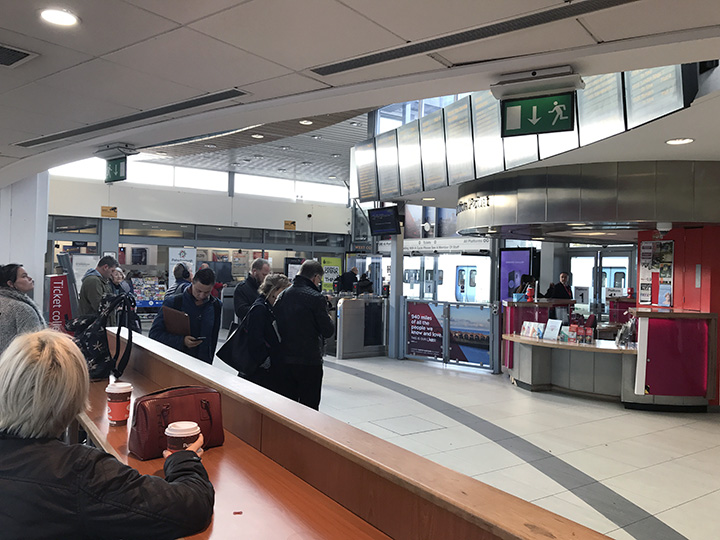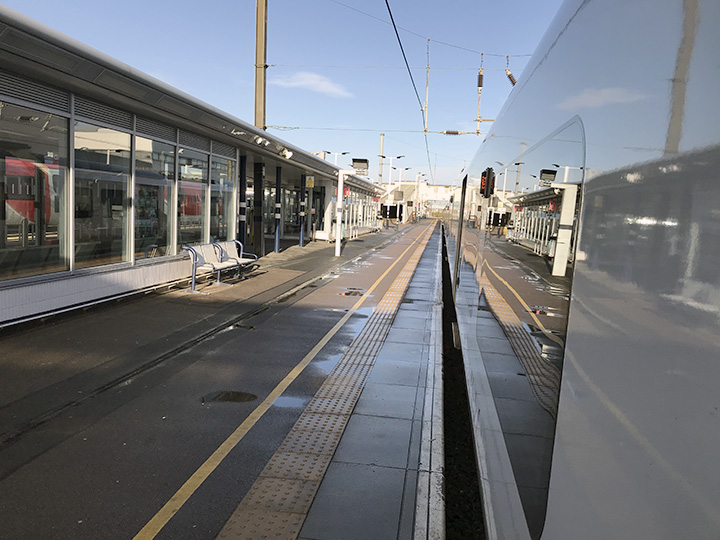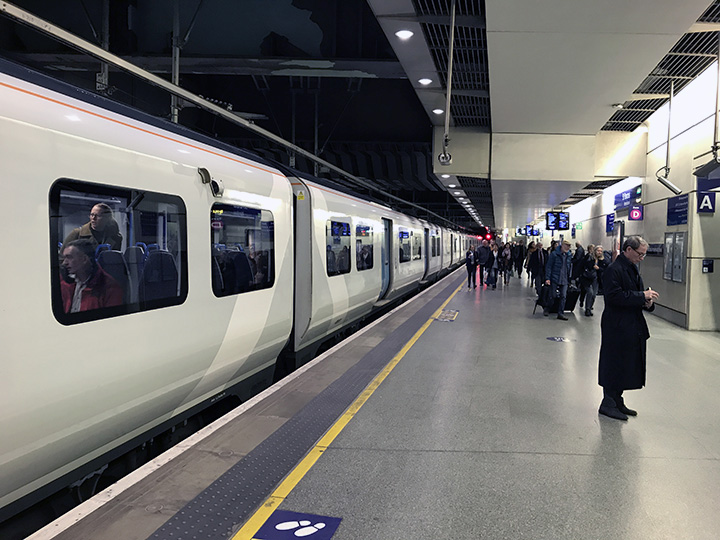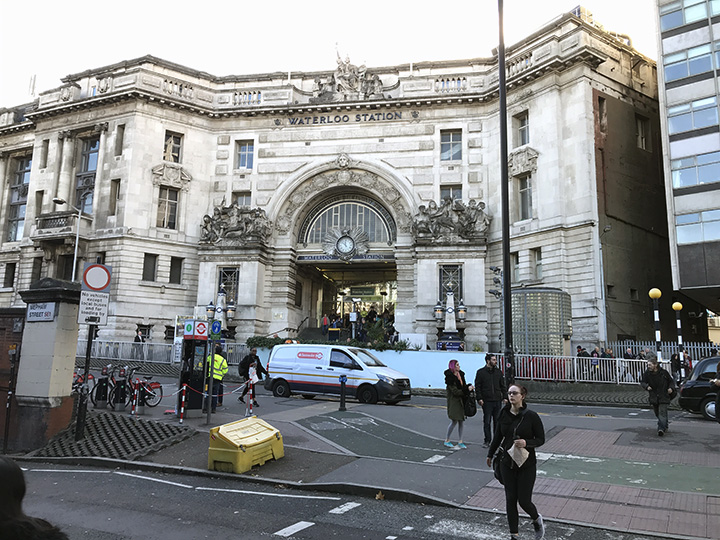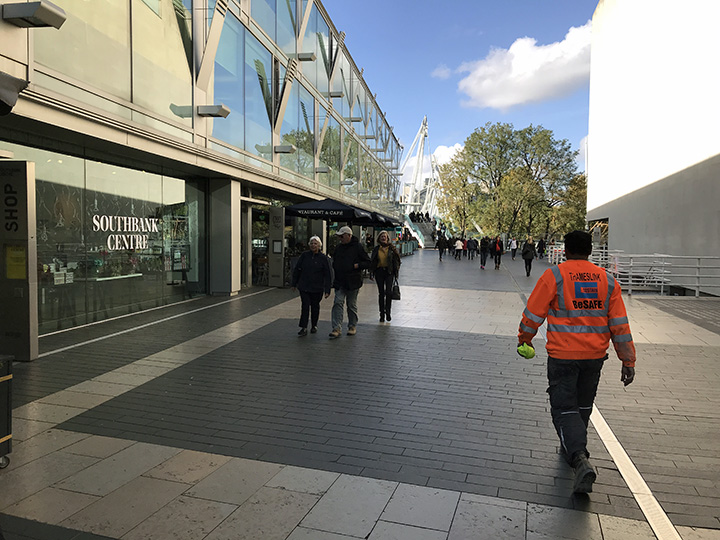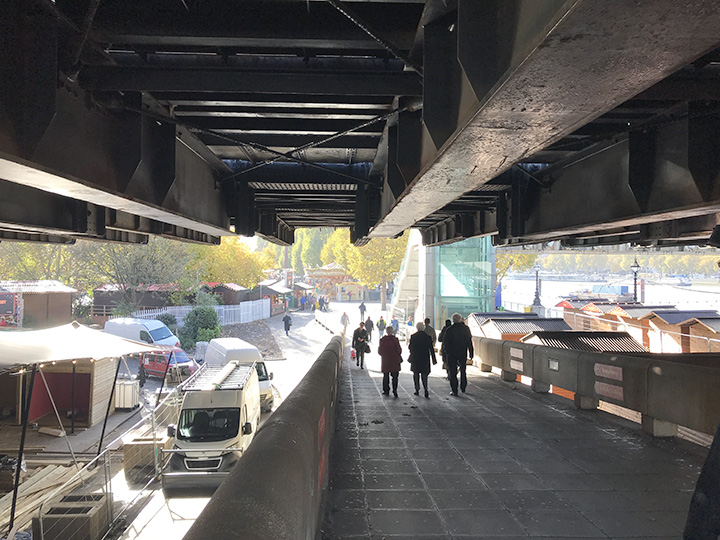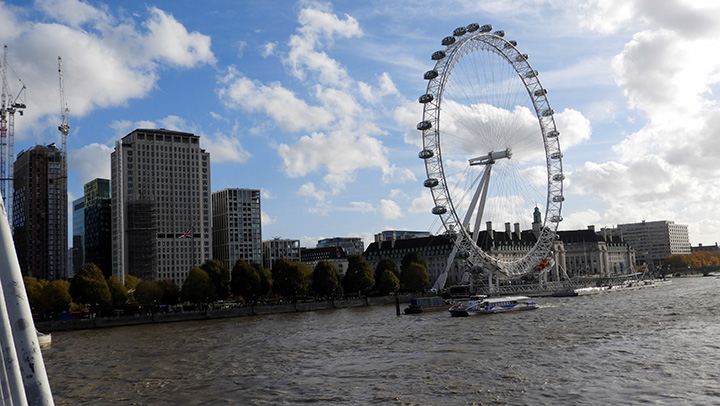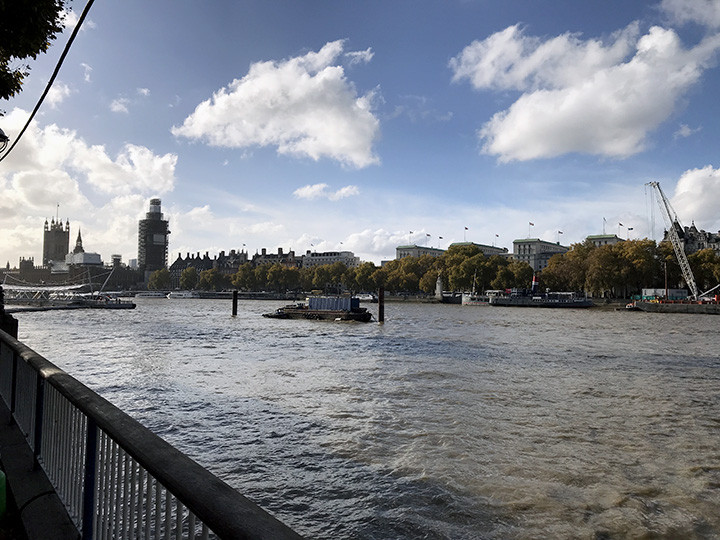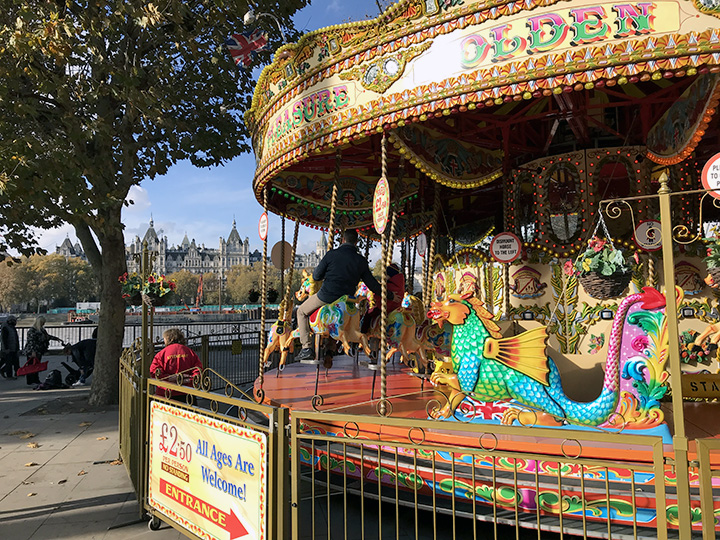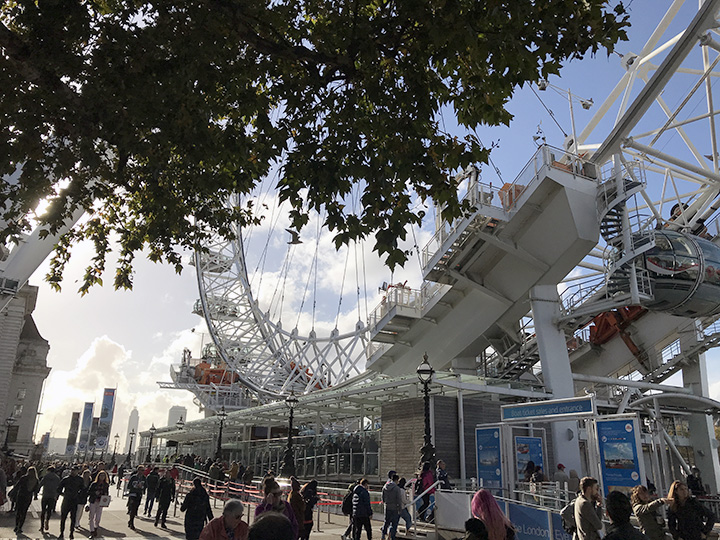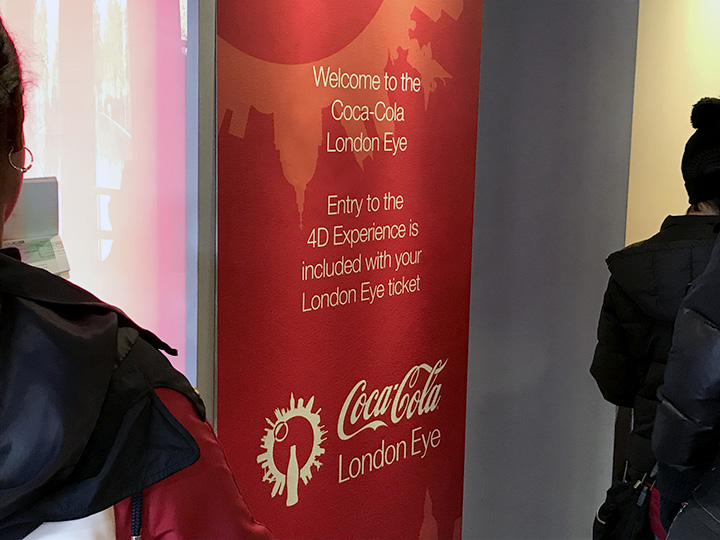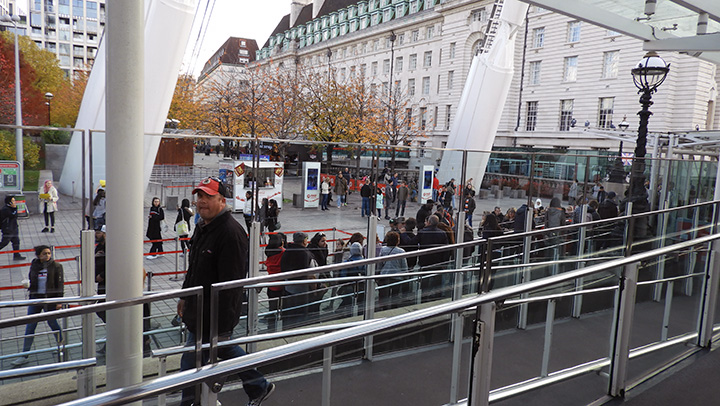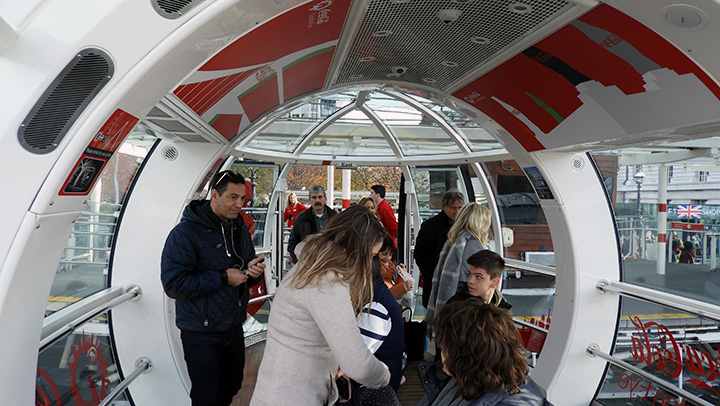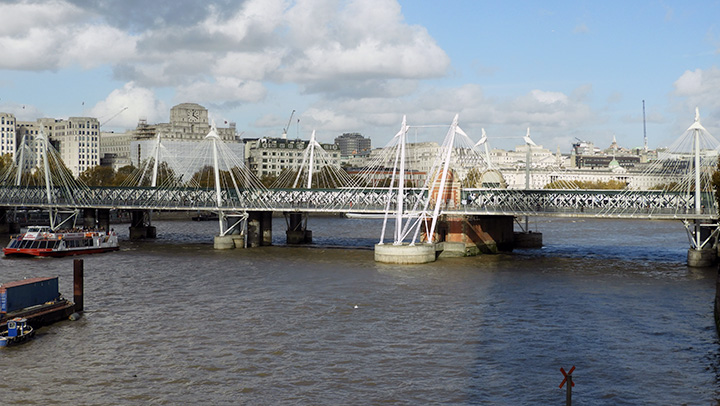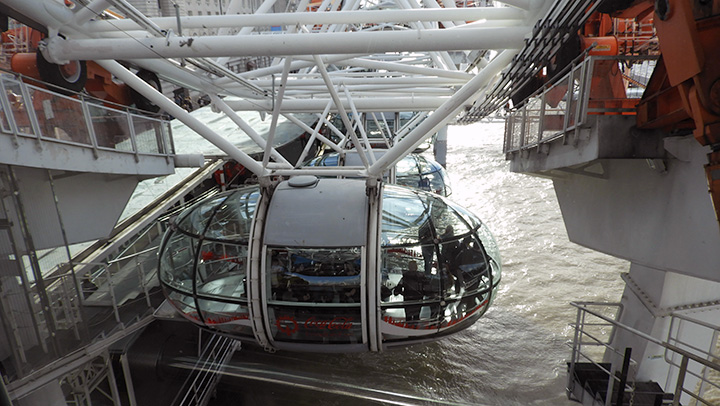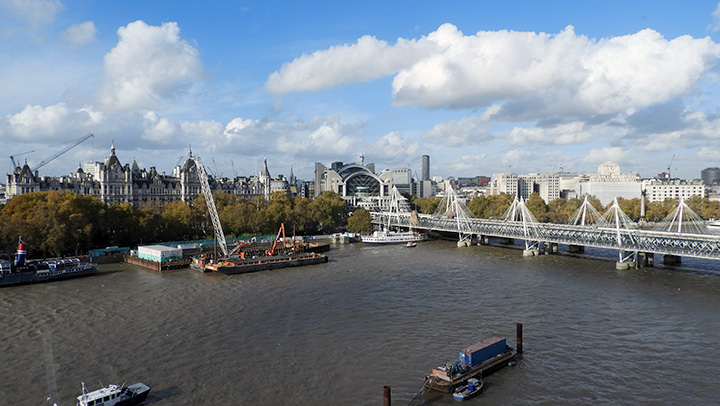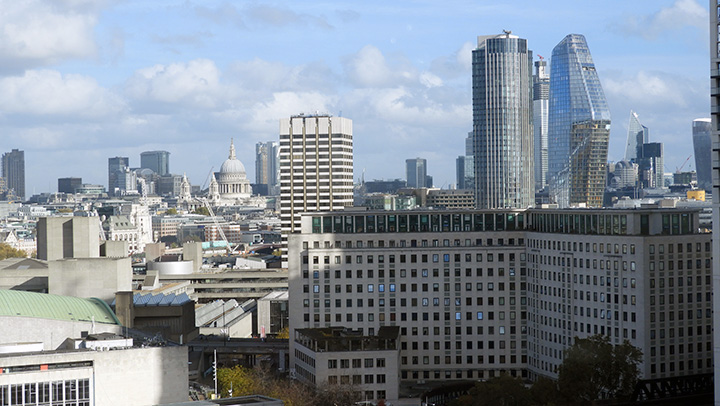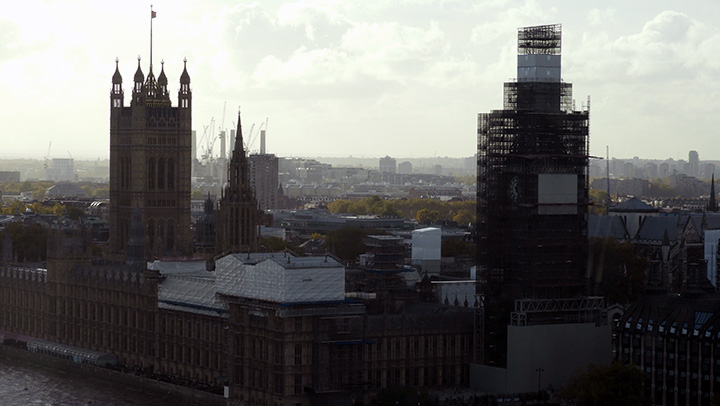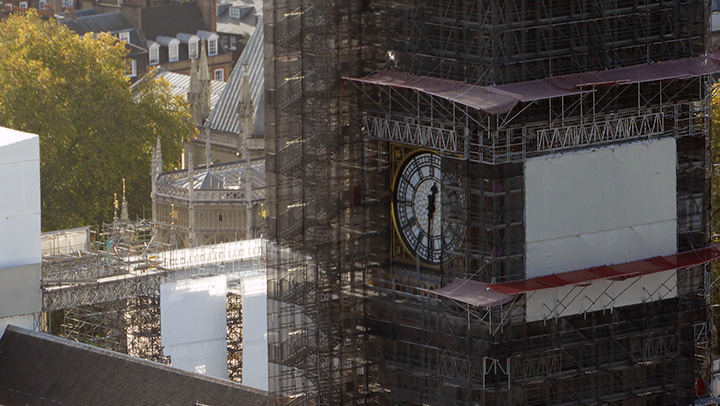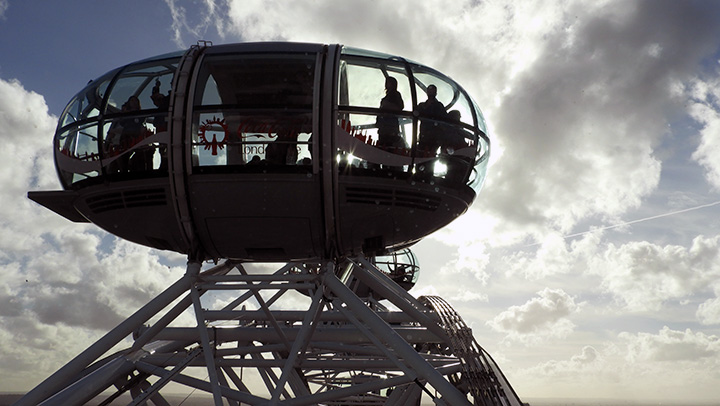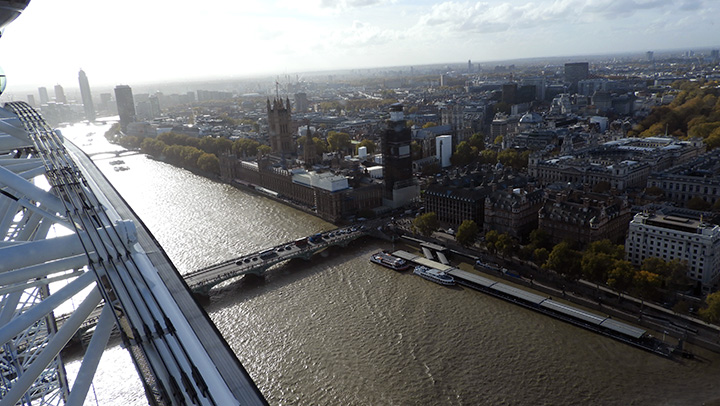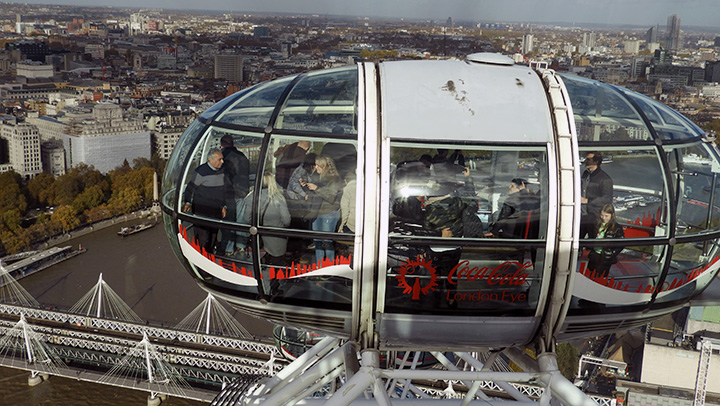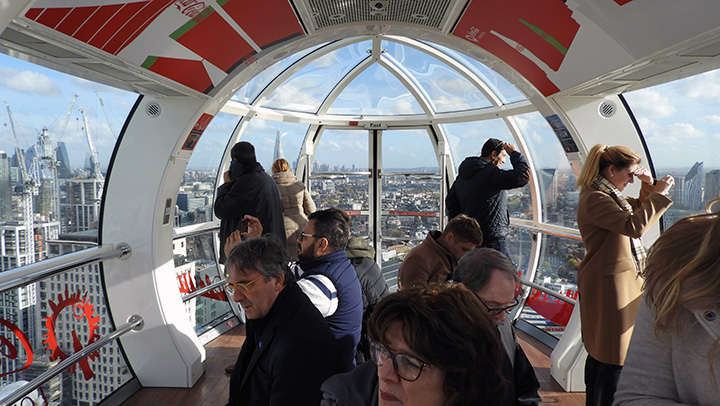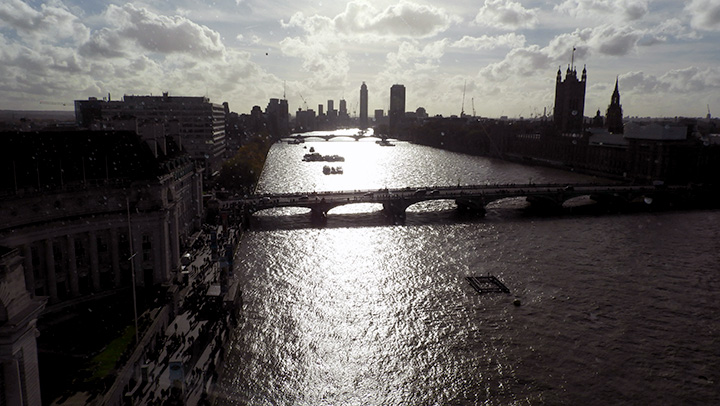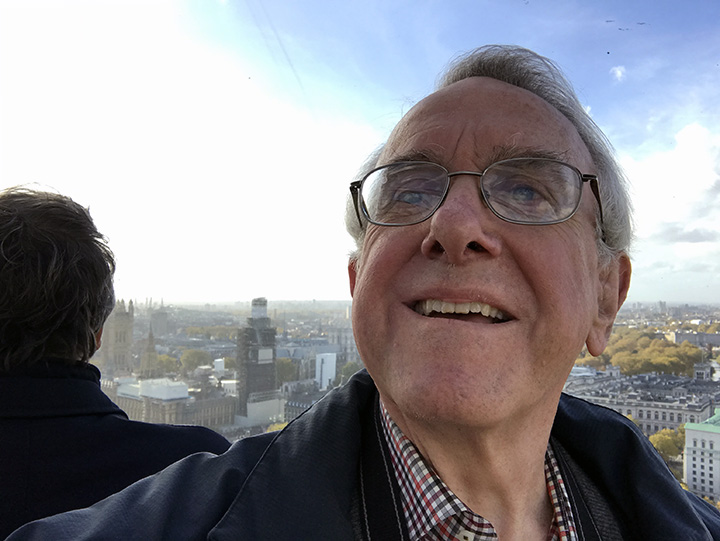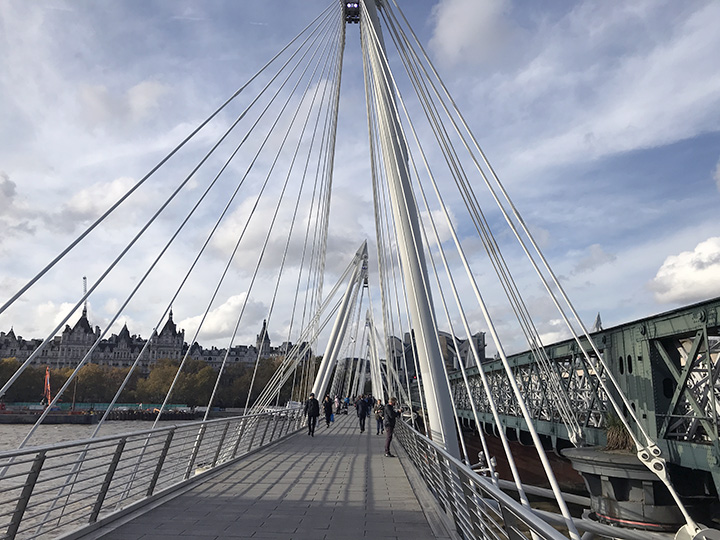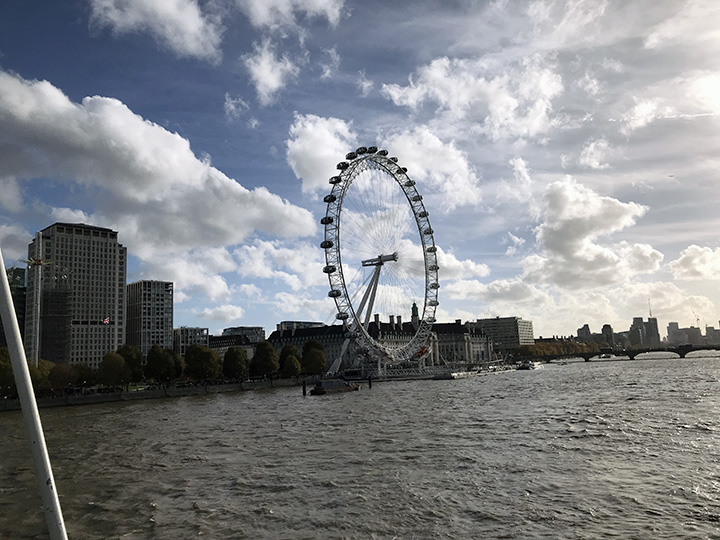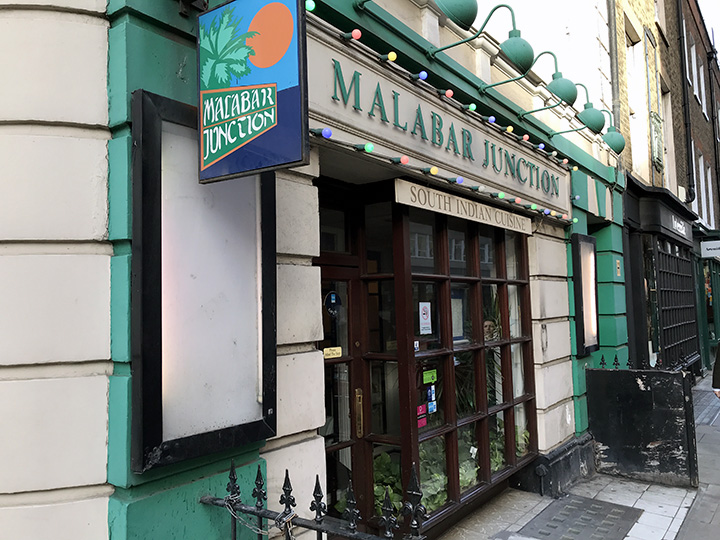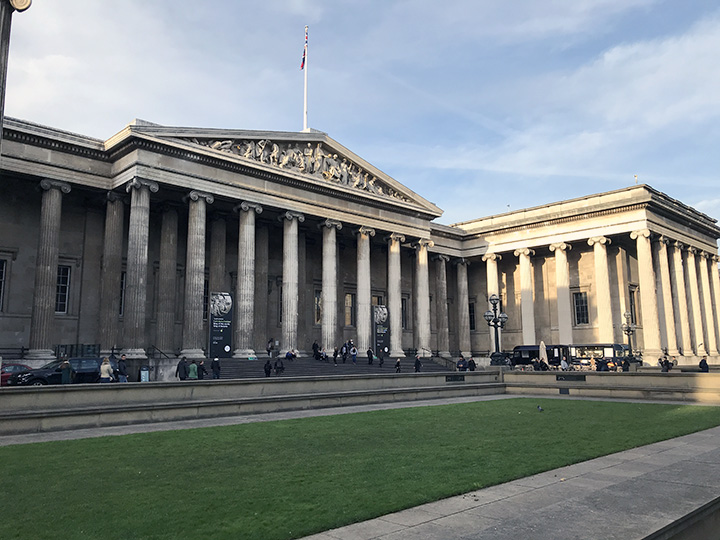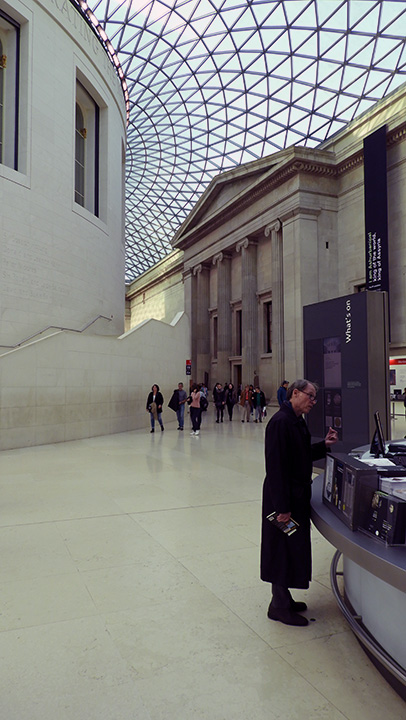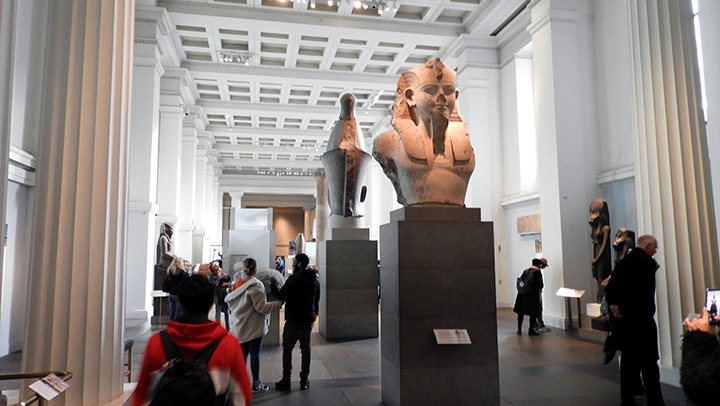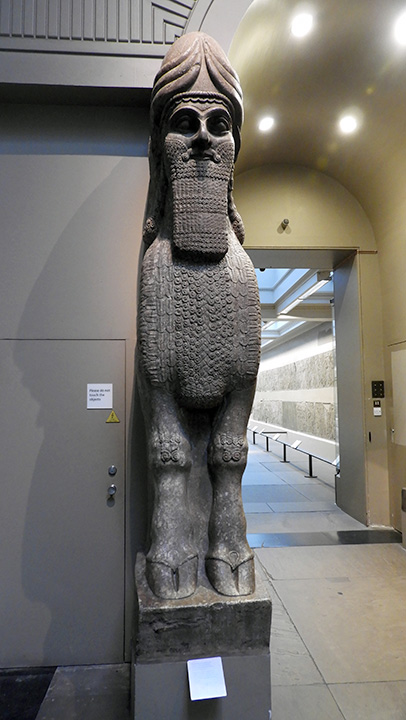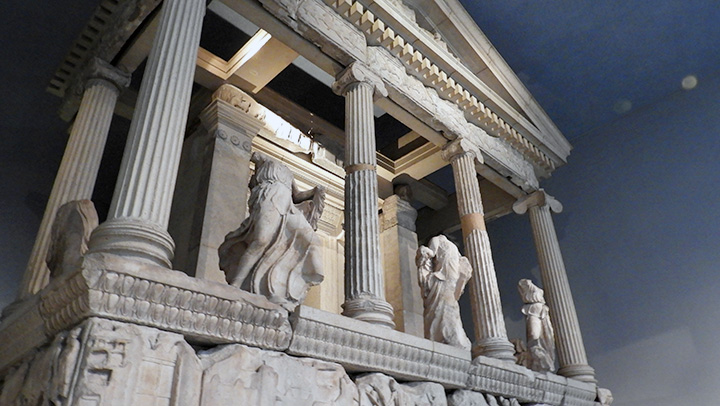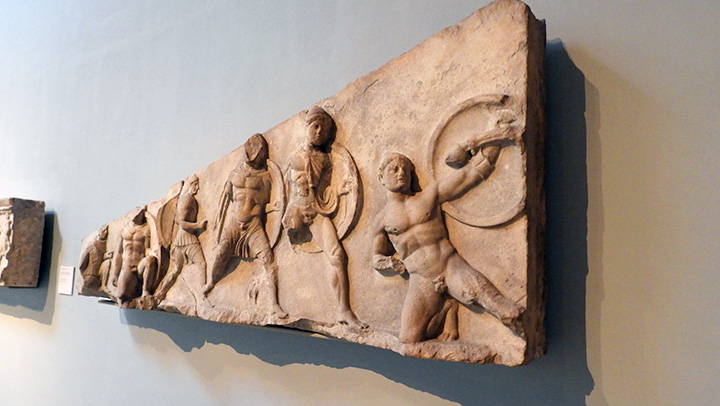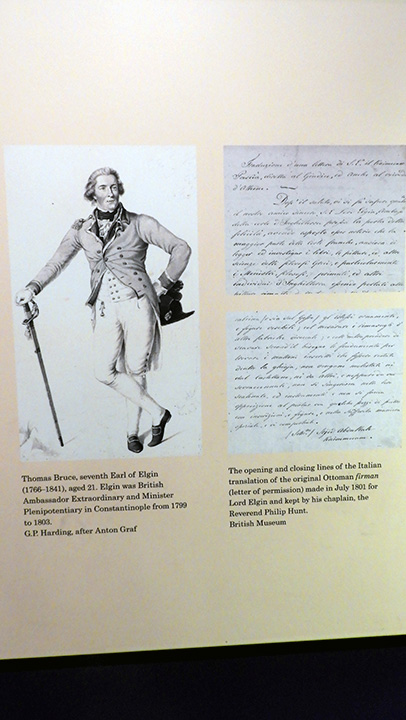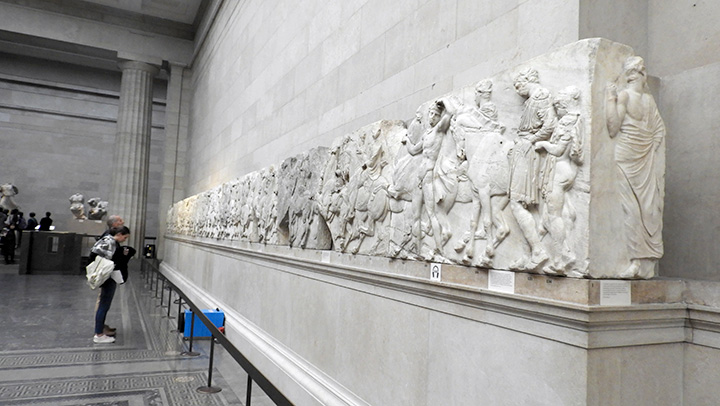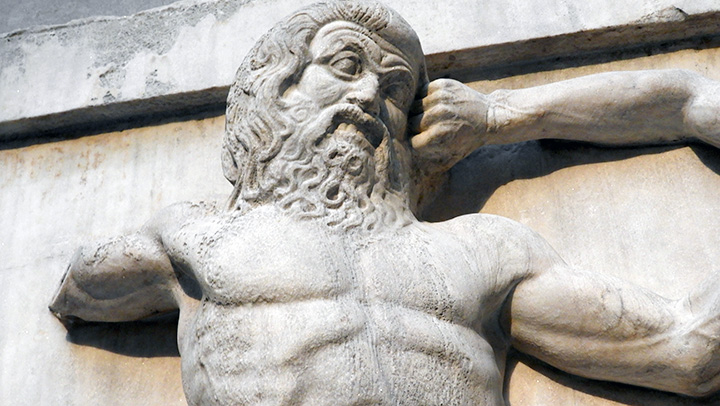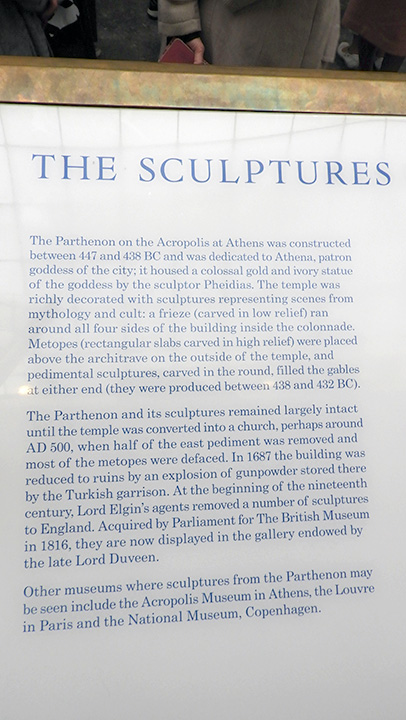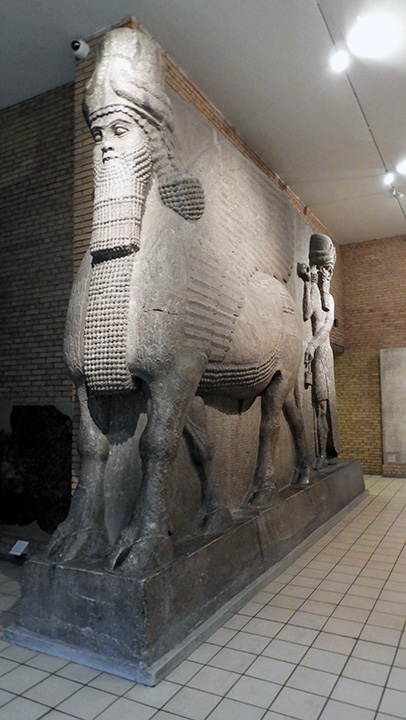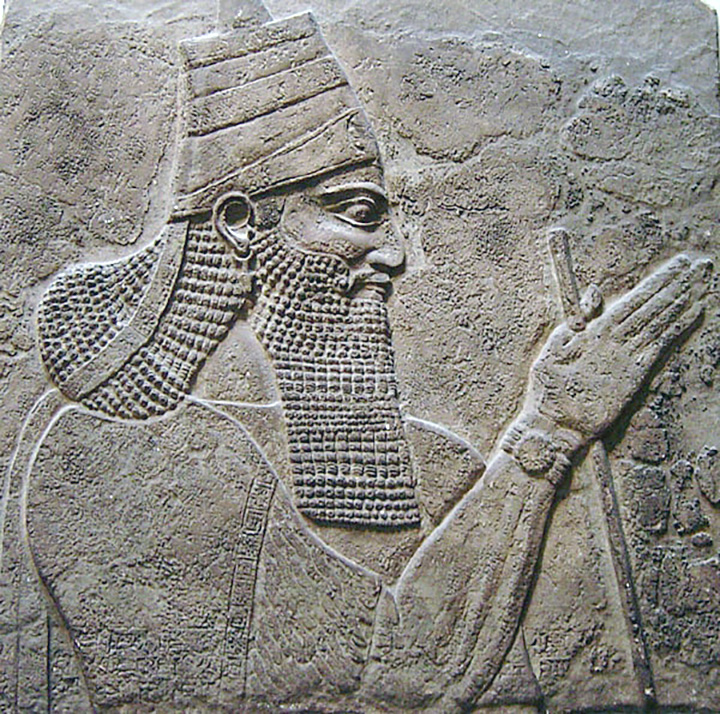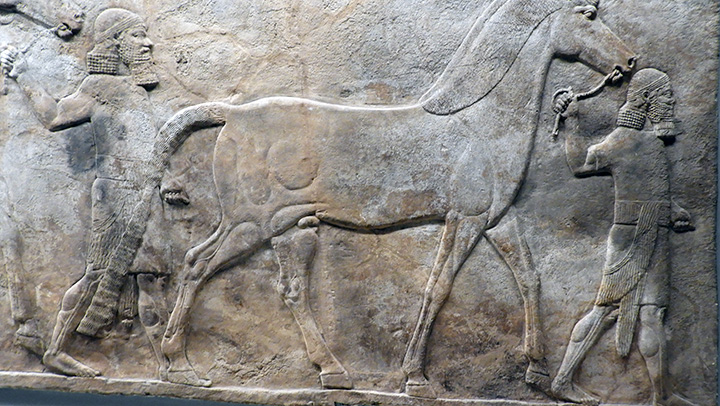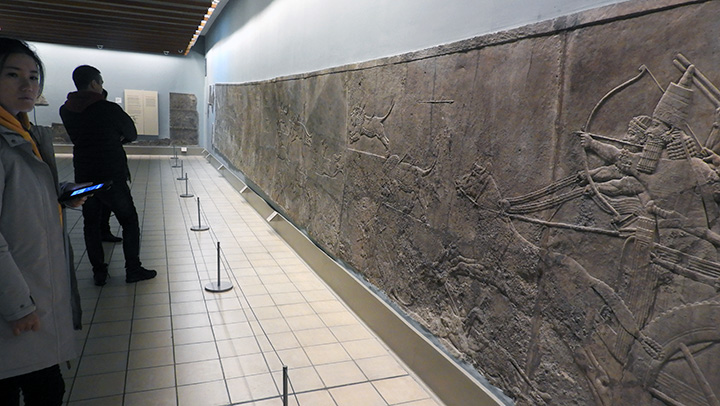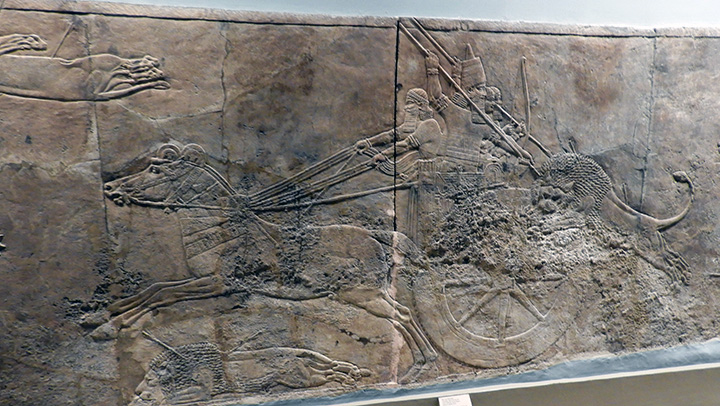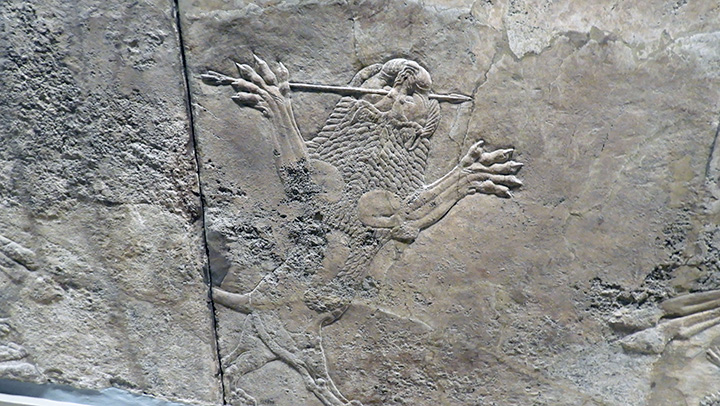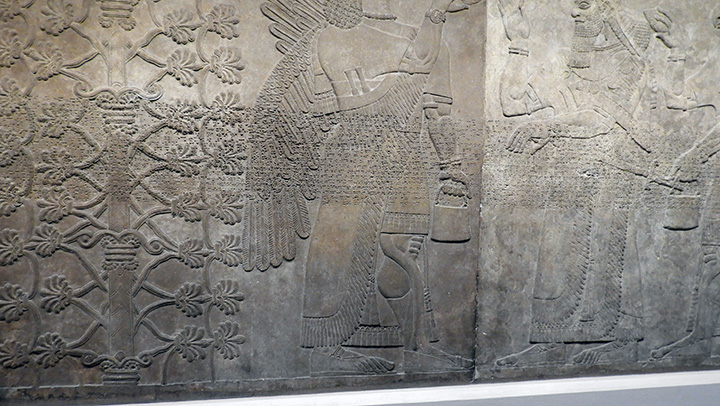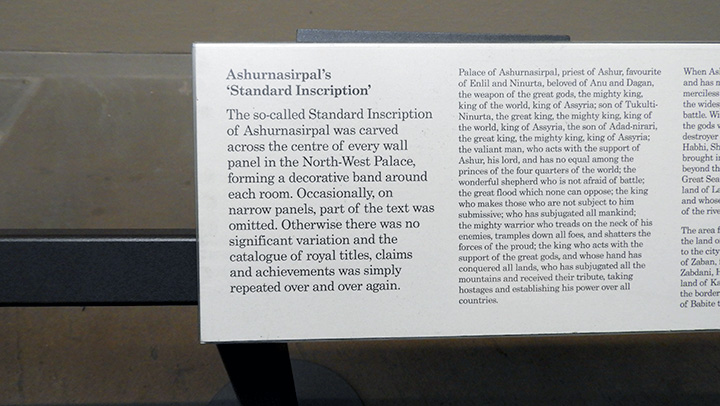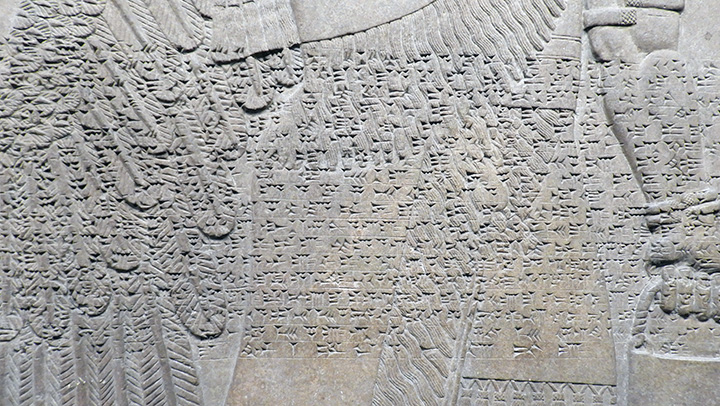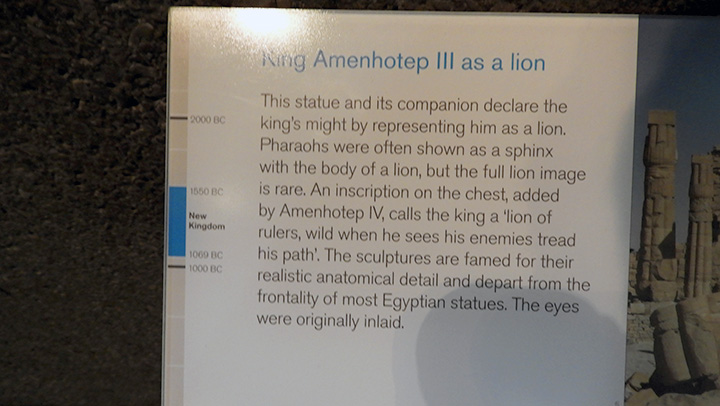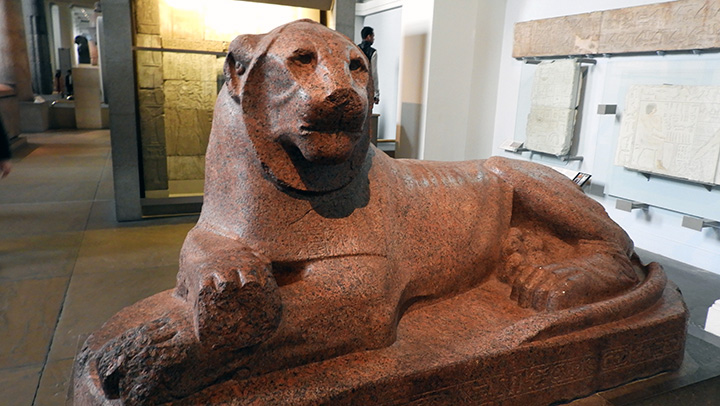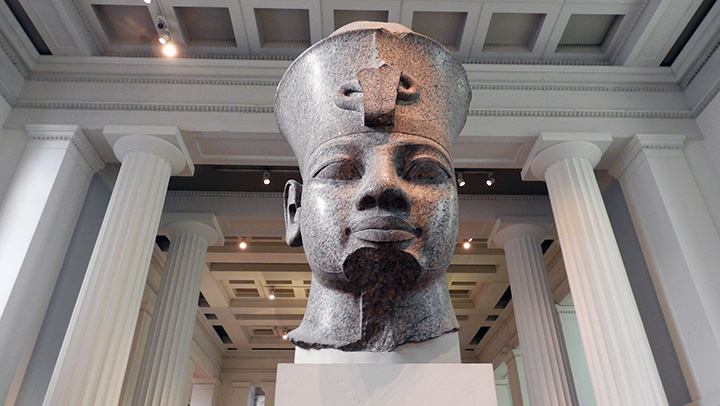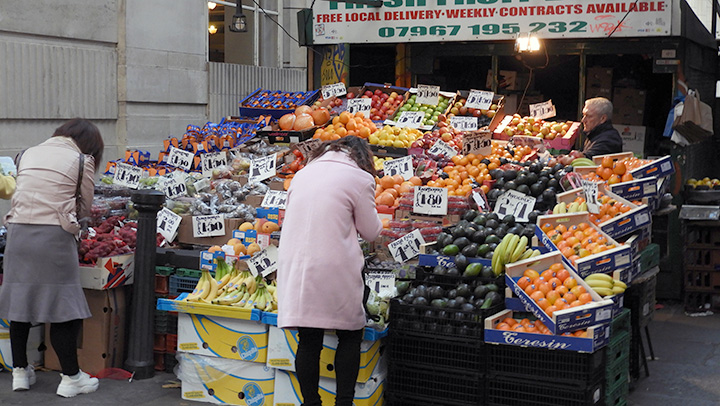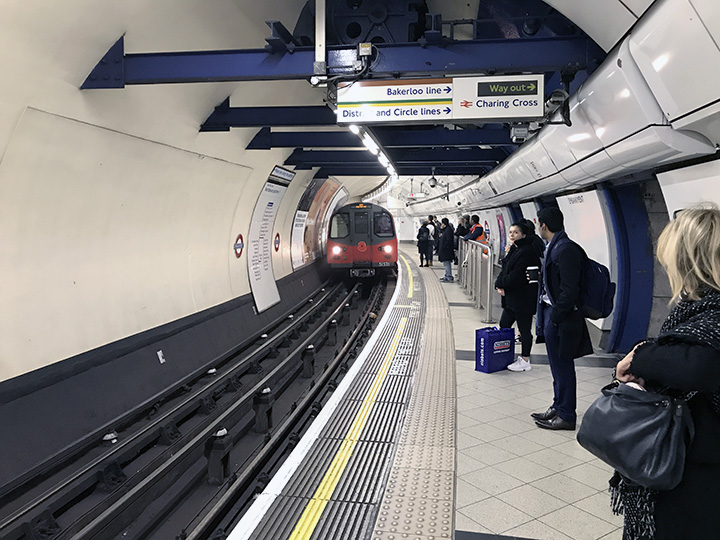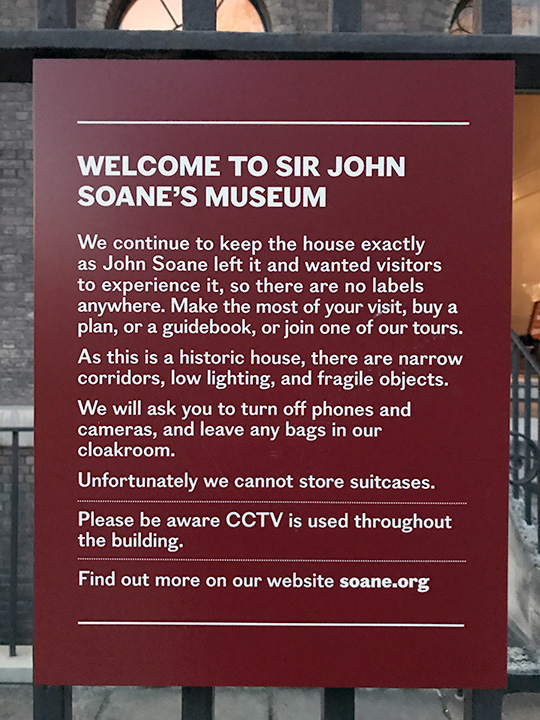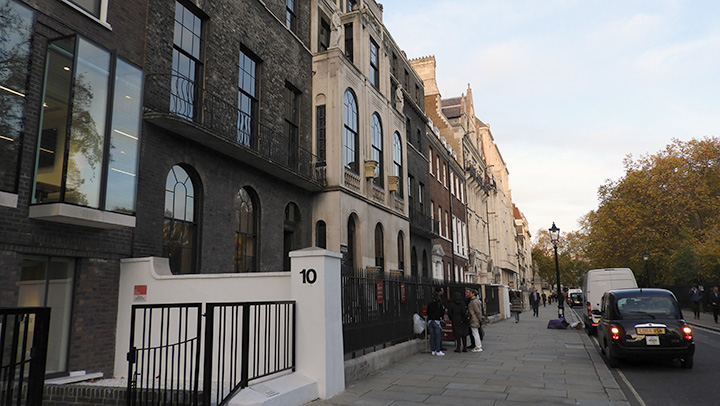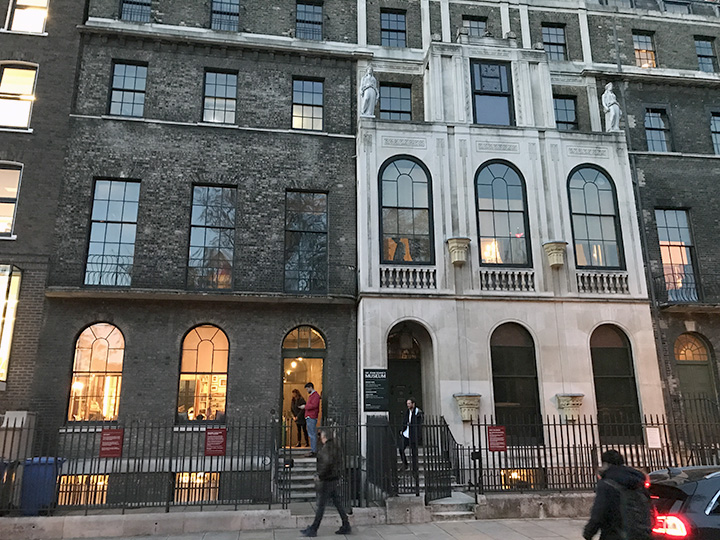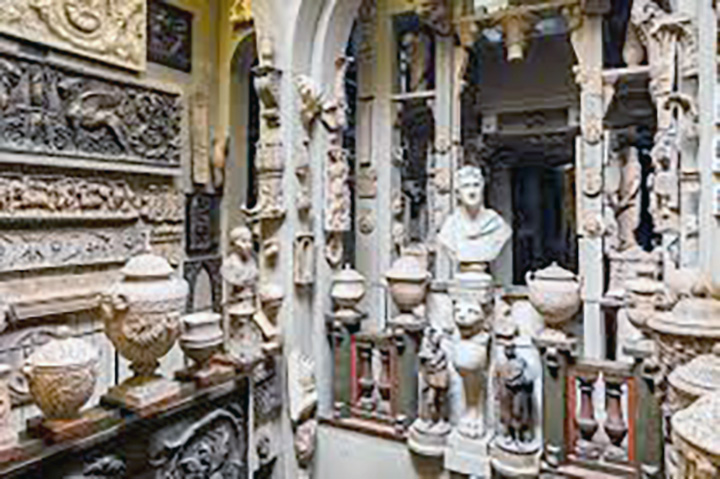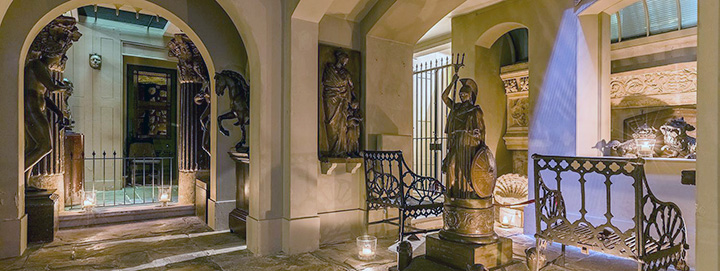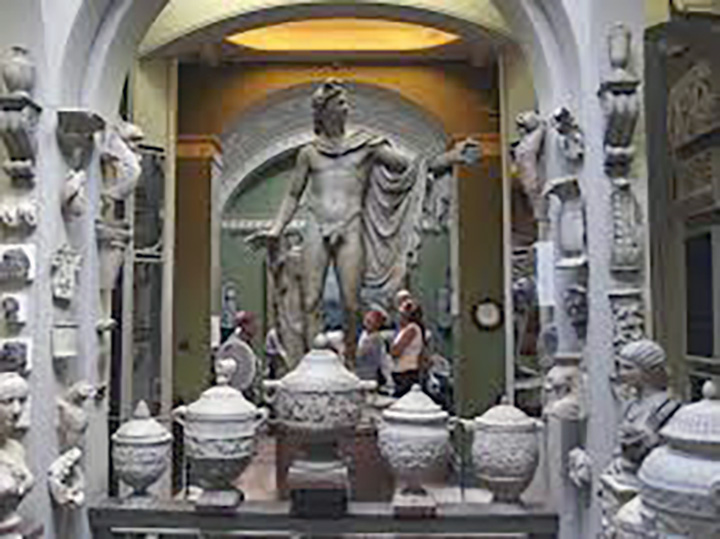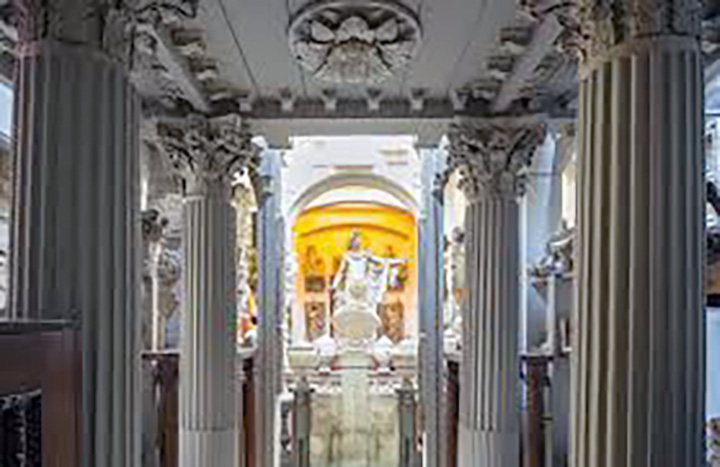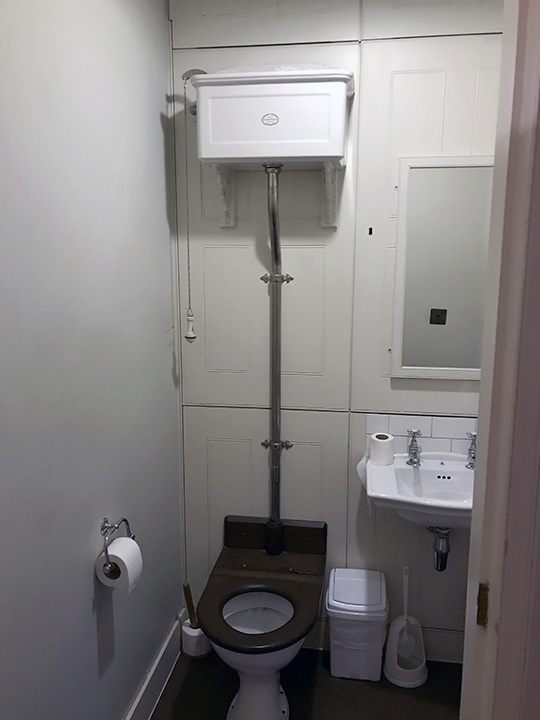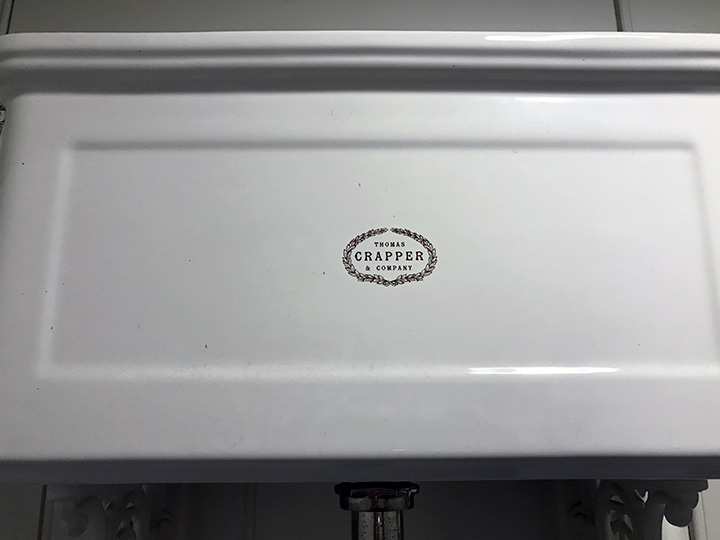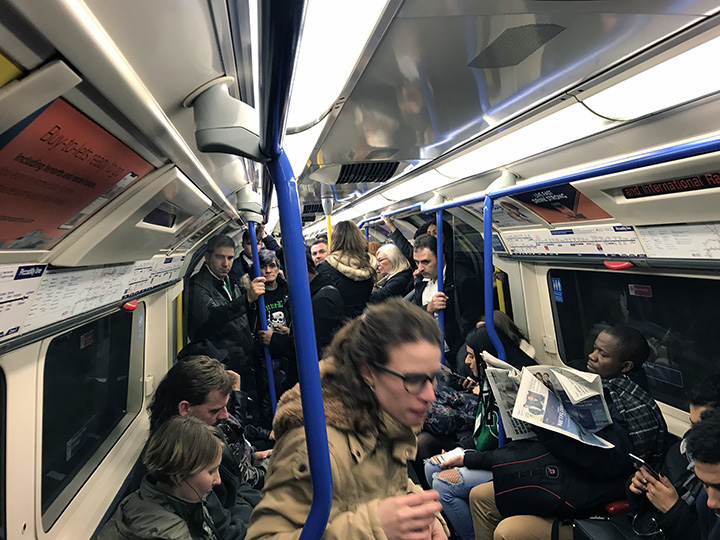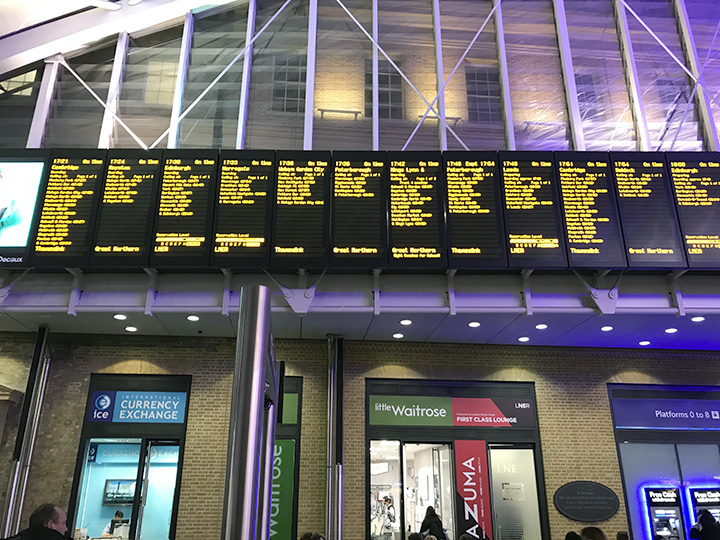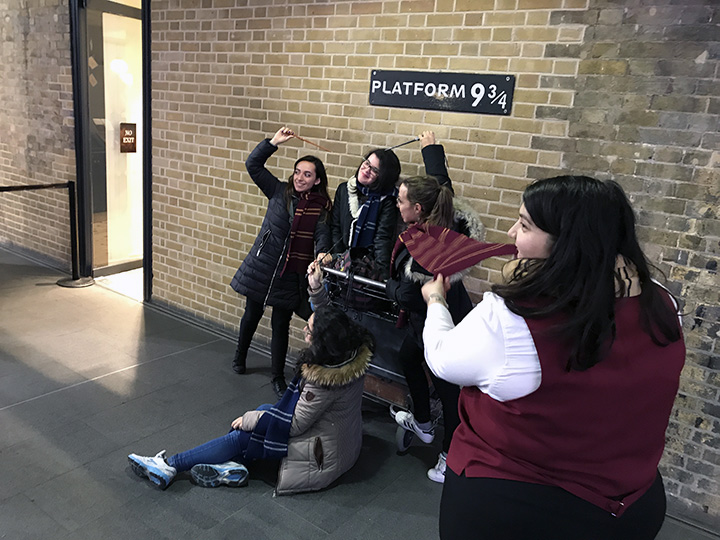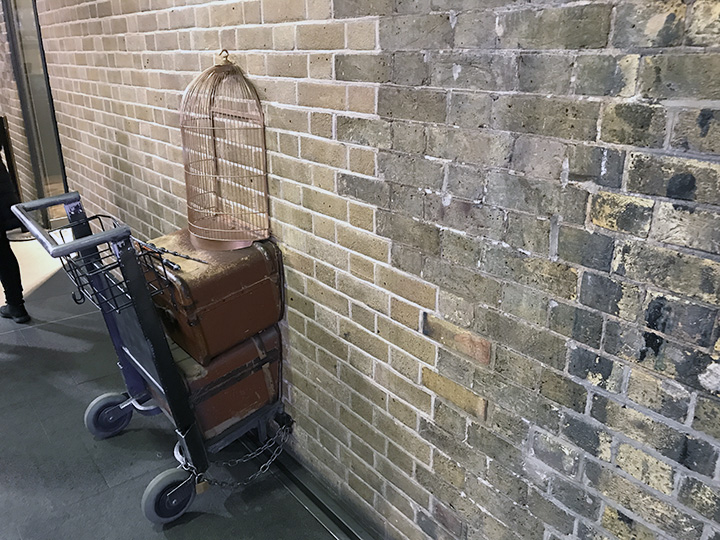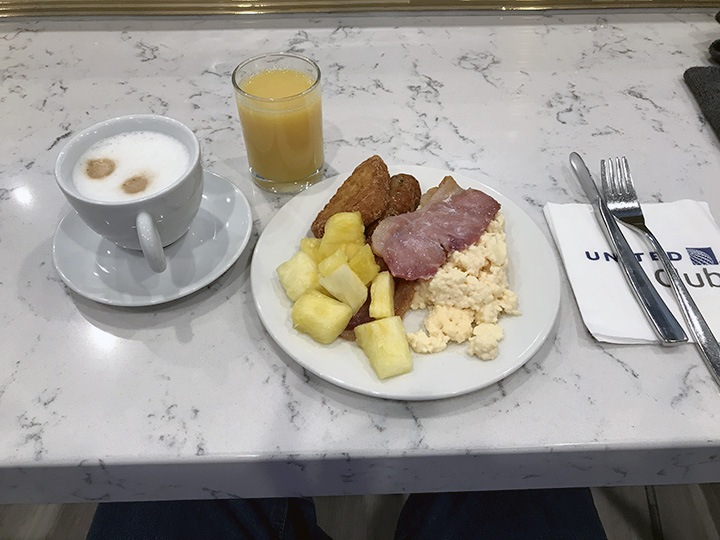|
Awwww...the last day of the trip. We'll be out the door tomorrow at 5:00 am for the drive to Heathrow on the wrong side of the road and flights home. So let's not drive much today.
Let's park the car at the Peterborough train station and take another trip to London. Sure wish we'd arrived here a few minutes sooner. The train we were going to take has been cancelled and now we have to wait about an hour in Peterborough. Oh well -- we're on vacation.
Train arrived...16 coaches long...
And off we go again. Don is engrossed in the morning paper.
This time we've arrived at St. Pancras station.
And from there we took the underground to Waterloo because...we've decided to do the most touristy thing we can think of.
We're going to ride a big old Ferris wheel.
It's somewhere around here...
Ah.
It's right here alongside the Thames River, which seems to be pronounced "Tams," not "Tims." Who knew?
There's a whole carnival of rides down here on the riverfront.
And a reeeely big Ferris wheel.
They call it the London Eye. The London Eye is a giant Ferris wheel on the South Bank of the River Thames in London. It is Europe's tallest Ferris wheel, is the most popular paid tourist attraction in the United Kingdom with over 3.75 million visitors annually, and has made many appearances in popular culture. The structure is 135 metres (443 ft) tall and the wheel has a diameter of 120 metres (394 ft). When it opened to the public in 2000 it was the world's tallest Ferris wheel. Its height was surpassed by the 525-foot (160 m) Star of Nanchang in 2006, the 165 metres (541 ft) Singapore Flyer in 2008, and the 550-foot tall (167.6 m) High Roller (Las Vegas) in 2014. Supported by an A-frame on one side only, unlike the taller Nanchang and Singapore wheels, the Eye is described by its operators as "the world's tallest cantilevered observation wheel". The London Eye offered the highest public viewing point in London until it was superseded by the 245-metre (804 ft) high[14] observation deck on the 72nd floor of The Shard, which opened to the public on 1 February 2013.
And it's sponsored by Coca Cola. How about that?
We're lucky today...there's hardly any line to get aboard.
Almost our turn.
It doesn't stop, waiting for you to get on. So you better watch your step.
Plenty of room inside the cabins.
OK, enough still pictures, let's see what the ride was really like.
We'll walk across that bridge in a little while. It's actually two bridges, or three, depending on how you count them. The Hungerford and Golden Jubilee Bridges.
It's very interesting how the cars are engineered to rotate as the wheel goes around, always keeping everything right side up and level.
Nice views from up here.
Isn't that the dome of St. Paul's Cathedral over there?
I do believe it is.
And there is Waterloo Bridge.
Once again we're faced with the sad fact that much of Westminster is being renovated. They're making things look nice for the next 500 years I suppose, but if you've come all this way to see the big sights all the scaffolding in the way is a bit disappointing.
I see you back there ... you can't hide from me, BB.
Oooooh, we're up high.
And we have a great view. That's Westminster Bridge down there.
Now we're at the tippy top of the wheel.
And everything is still right side up. Amazing!
Saying goodbye to our high view of London.
Bill certainly enjoyed it. But we'll soon be back on solid ground.
So the London Eye isn't exciting enough for you? No problem; London's got you covered. But Don and I decided we didn't really need this much excitement.
The Hungerford Bridge crosses the River Thames in London, and lies between Waterloo Bridge and Westminster Bridge. Owned by Network Rail Infrastructure Ltd (who use its official name of Charing Cross Bridge) it is a steel truss railway bridge flanked by two more recent, cable-stayed, pedestrian bridges that share the railway bridge's foundation piers, and which are named the Golden Jubilee Bridges. The north end of the bridge is Charing Cross railway station, and is near Embankment Pier and the Victoria Embankment. The south end is near Waterloo station, County Hall, the Royal Festival Hall, and the London Eye.
Bye, eye.
It's lunch time and Don has picked out another Indian restaurant.
Bill really wanted tandoori chicken because he remembers his first trip to London back in the '70s when he saw it advertised but was too timid to try something that sounded so exotic. So here we are...trouble is, the tandoor chef won't report for duty for another few hours. And this stuff was good enough, but...want some advice on Indian food in London? Chutney Mary.
Enough food; we have more sights to see; let's catch the underground. Know why I made this video clip? Because I wanted to capture the insistent recorded voice warning, "Mind The Gap!" But there's no warning at this station. We heard "Mind The Gap" at other stations, but not this one. Fooey. But we always minded the gap anyway.
Located in the Bloomsbury area of London, it is a public institution dedicated to human history, art and culture. Its permanent collection numbers some 8 million works, and is among the largest and most comprehensive in existence having been widely sourced during the era of the British Empire, and documenting the story of human culture from its beginnings to the present. It is the first national public museum in the world. The British Museum first opened to the public on 15 January 1759, in Montagu House, on the site of the current building. Its expansion over the following two and a half centuries was largely a result of expanding British colonisation and has resulted in the creation of several branch institutions, the first being the British Museum (Natural History) – now the Natural History Museum – in 1881.
Since we don't have lots of time, Don asks about the "must-see" stuff, and we're pointed to the antiquities.
Yeah, this looks pretty old.
And it's not just Egyptian antiquities, but Assyrian, and more, too.
See? Here's the Nereid Monument, a sculptured tomb from Xanthos in Lycia (then part of the Achaemenid Persian Empire), close to present-day Fethiye in Mugla Province, Turkey. It took the form of a Greek temple on top of a base decorated with sculpted friezes, and is thought to have been built in the early fourth century BC as a tomb for Arbinas (Lycian: Erbbina, or Erbinna), the Xanthian dynast who ruled western Lycia. The tomb is thought to have stood until the Byzantine era before falling into ruin. The ruins were rediscovered by British traveller Charles Fellows in the early 1840s. Fellows had them shipped to the British Museum, where some of them have been reconstructed to show what the east façade of the monument would have looked like.
A room full of plunder.
Very nice, but if you're going to plunder the ancient world of its art, don't stop with the Persians.
Do like Lord "It's Got a Hard G" Elgin and get the Ottoman sultan who's occupied Greece to sell you the treasures of the Athens Acropolis.
They're known as the Elgin Marbles and they are a collection of Classical Greek marble sculptures made under the supervision of the architect and sculptor Phidias and his assistants around 450 BC. They were originally part of the temple of the Parthenon and other buildings on the Acropolis of Athens.
From 1801 to 1812, agents of Thomas Bruce, 7th Earl of Elgin removed
about half of the surviving sculptures of the Parthenon, as well as
sculptures from the Propylaea and Erechtheum. The Marbles were
transported by sea to Britain. Elgin later claimed to have obtained
in 1801 an official decree (a firman) from the Sublime Porte, the
central government of the Ottoman Empire which were then the rulers
of Greece. This firman has not been found in the Ottoman archives
despite its wealth of documents from the same period and its
veracity is disputed. The half not removed by Elgin is now displayed
in the Acropolis Museum, aligned in orientation and within sight of
the Parthenon, with the position of the missing elements clearly
marked and space left should they be returned to Athens.
In Britain, the acquisition of the collection was supported by some,
while some others, such as Lord Byron, likened the Earl's actions to
vandalism or looting. Following a public debate in Parliament and
its subsequent exoneration of Elgin, he sold the Marbles to the
British government in 1816. They were then passed to the British
Museum, where they are now on display in the purpose-built Duveen
Gallery.
After gaining its independence from the Ottoman Empire in 1832, the newly found Greek state began a series of projects to restore its monuments and retrieve looted art. It has expressed its disapproval of Elgin's removal of the Marbles from the Acropolis and the Parthenon, which is regarded as one of the world's greatest cultural monuments. International efforts to repatriate the Marbles to Greece were intensified in the 1980s by then Greek Minister of Culture Melina Mercouri, and there are now many organisations actively campaigning for the Marbles' return, several united as part of the International Association for the Reunification of the Parthenon Sculptures. The Greek government itself continues to urge the return of the marbles to Athens so as to be unified with the remaining marbles and for the complete Parthenon frieze sequence to be restored, through diplomatic, political and legal means.
In 2014, UNESCO offered to mediate between Greece and the United Kingdom to resolve the dispute, although this was later turned down by the British Museum on the basis that UNESCO works with government bodies, not trustees of museums. In 2018, the leader of the British Labour party Jeremy Corbyn vowed to return the Marbles to Greece if he becomes prime minister.
Whether they end up returning to Greece or not, there's no denying the artistry of these ancient works.
Is it just me, or is there something of a defensive tone in this summary of the situation by the British Museum?
Now let's look at some art stolen from Iraq.
This is King Tiglath-Pileser III, who reigned 744-727 BC in the Assyrian capital at Nimrud, in northern Iraq. These reliefs were removed from his palace there.
The art depicts scenes of daily life.
And action-packed battles.
Even a lion hunt, a favorite pastime of the King.
Chase the lion...
Kill the lion... Is this thrilling or what?
There's lots to look at.
And some of the art is overlaid with text.
A standard inscription.
And the King made sure it was on everything.
Now let's look at some Egyptian art. Those 18th and 19th century Brits plundered art from nearly everywhere.
Amenhotep III as a lion. Can you see the resemblance?
He looks like he could rule Egypt. But he's going to have to be the last bit of plundered art for the day. We have one more museum to visit.
I'm a sucker for fruit stands...I'll always take a picture.
The next museum will require a ride on the underground.
I'd never heard of Sir John Soane's Museum, but Don knew all about it and really wanted to go. It's a house museum that was formerly the home of the neo-classical architect John Soane. It holds many drawings and models of Soane's projects and the collections of paintings, drawings and antiquities that he assembled.
Soane demolished and rebuilt three houses in succession on the north
side of Lincoln's Inn Fields. He began with No. 12 (between 1792 and
1794), externally a plain brick house. After becoming Professor of
Architecture at the Royal Academy in 1806, Soane purchased No. 13,
the house next door, today the museum, and rebuilt it in two phases
in 1808–09 and 1812.
After completing No.13, Soane set about treating the building as an architectural laboratory, continually remodeling the interiors. In 1823, when he was over 70, he purchased a third house, No. 14, which he rebuilt in 1823–24. This project allowed him to construct a picture gallery, linked to No.13, on the former stable block of No. 14. The front main part of this third house was treated as a separate dwelling and let as an investment; it was not internally connected to the other buildings. When he died No. 14 was bequeathed to his family and passed out of the museum's ownership.
It appears Soane was an avid collector who kept everything. His house is packed floor to ceiling, basement to attic, with ... stuff. We were not allowed to take pictures inside, but my finger slipped and I accidentally ended up with this one photo to illustrate the ... collection.
He had tons of stuff. I found this poor quality picture on the internet along with several others that follow below.
Like this one.
Room after room of stuff. It was fascinating to see, but not very appealing.
I couldn't live like this.
But he seemed to like it. In fact, he was so proud of his collection that he willed the house to the British government to be maintained as a museum after his death, and for better or worse, so it has been.
His toilet is one part of the museum definitely worth mentioning.
It's the genuine article!
That's enough. Let's take the tube back to King's Cross Station to catch a train home to Peterborough for one more night's stay in England.
Is Peterborough up there somewhere? I sure hope so.
The line is still long to get a picture taken at Platform 9 3/4.
And the luggage cart is still stuck. Let's go home.
And so, the following morning, dark and early at 5:00 am, we drove two hours to Heathrow and spent another hour trying to find Hertz because the nice lady in the iPhone took us to the Hertz desk in the departure terminal at the airport rather than to the Hertz returns facility a few miles away, through several roundabouts.
Good old Don had a free pass to the United Airlines first class lounge in Terminal 2, and since he was departing from Terminal 5 and I was departing from Terminal 2, he let me enjoy a little luxury at the beginning of what was to become a very long trip. I eventually flew from Heathrow to Newark on time, but a few hours after I arrived there my flight to Memphis was cancelled and the best plan to get there early the next day would be to fly to Houston from Newark, spend the night, and catch a 9:30 flight home. So that's how this otherwise practically perfect trip ended.
At least I got a free English breakfast at Heathrow.
And later, as I was sitting and waiting, and playing with my iPhone and pondering my situation, I found this drawing which helped me reflect on my world travels. No wonder I feel like I'm being toyed with. I hate cats.
|

